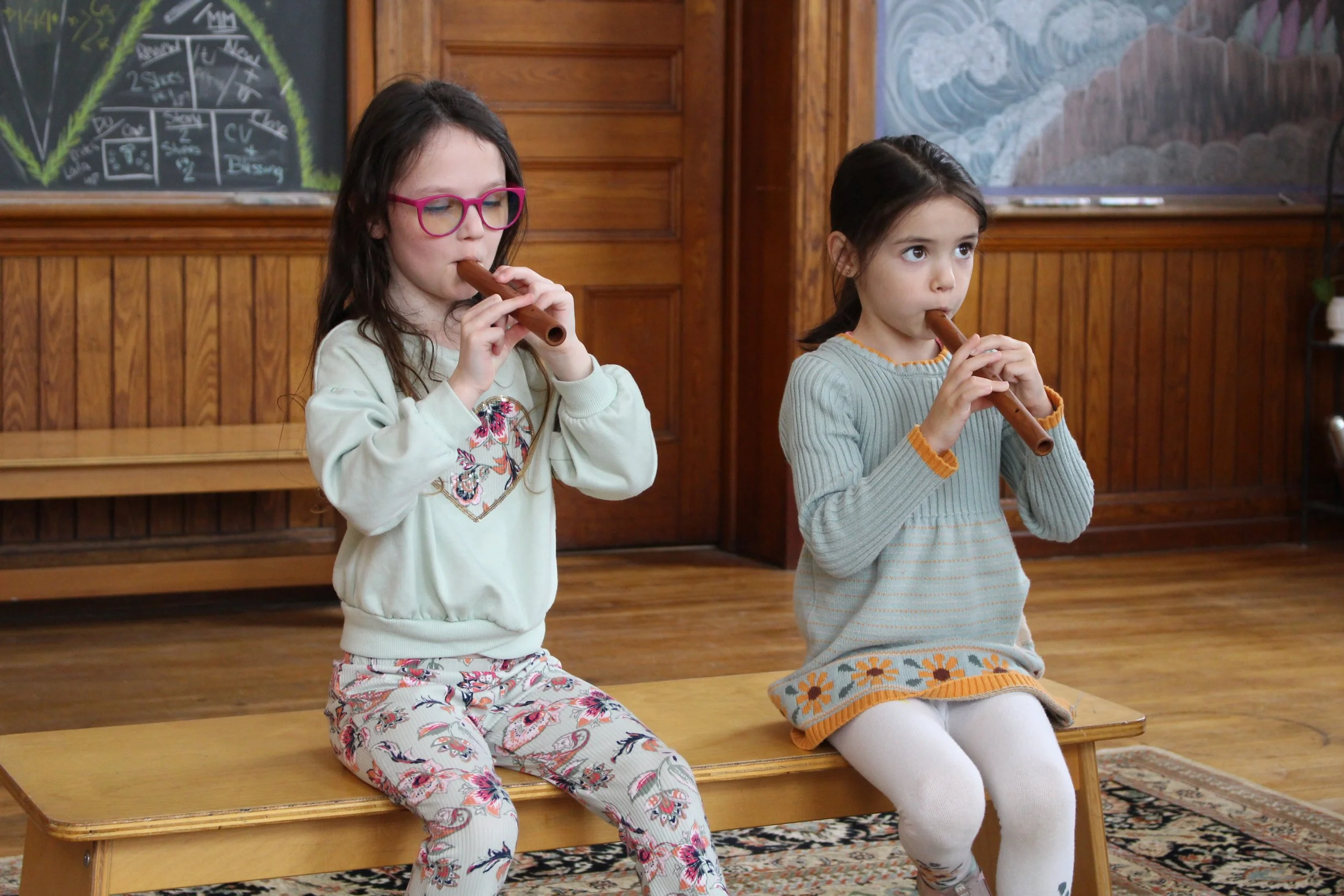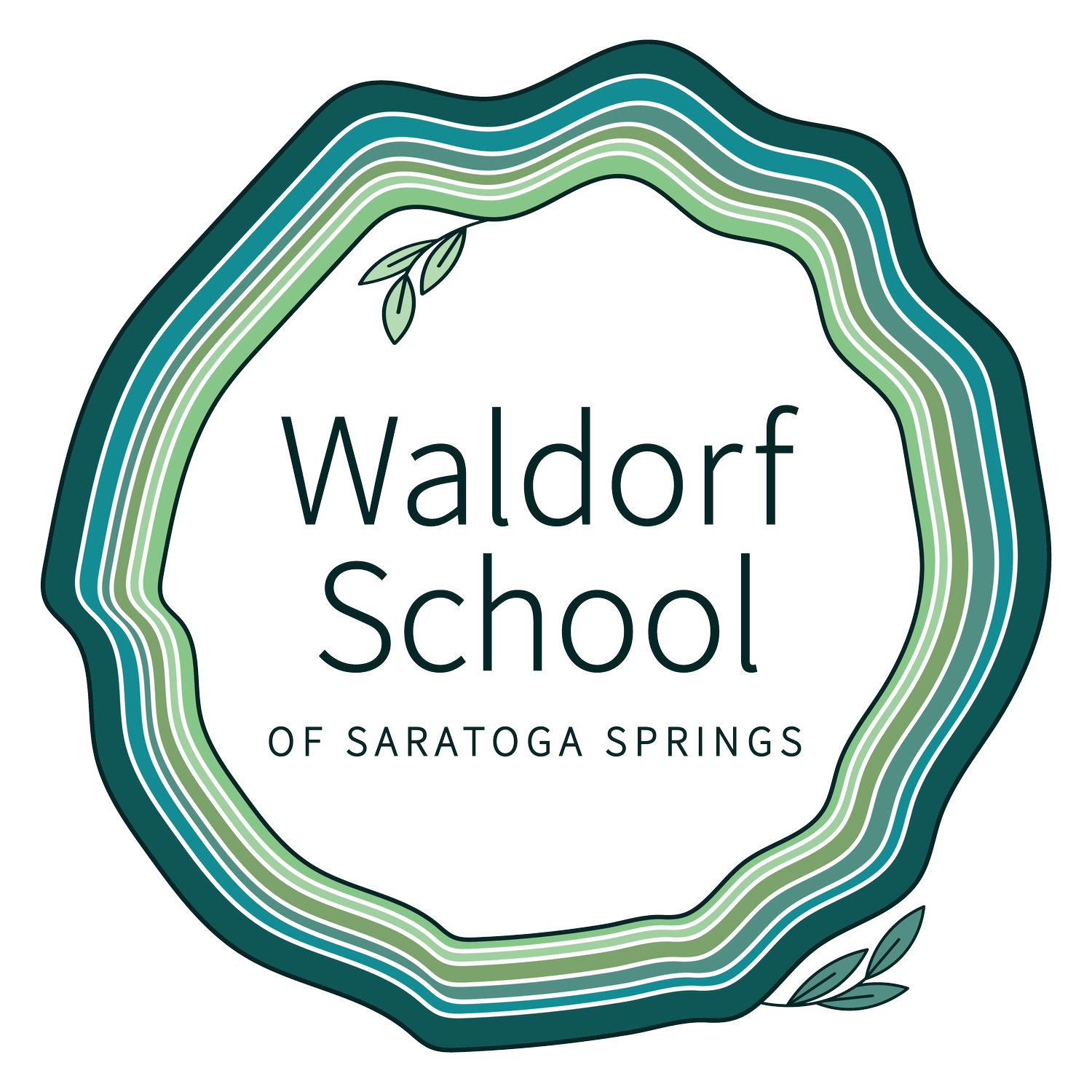
Early Grades
The Waldorf Lower School (grades 1-5) offers a developmentally aligned curriculum that educates the whole student. The fundamentals of math, writing and reading come alive through a sensory-rich, interdisciplinary curriculum using stories, plays, art, music and movement. Each day begins with a focused immersion of the main lesson block subject, followed by special subject classes. Below is a general overview of the grades one through five experience at our school. For a list of specific subjects taught in each grade, click here.
Class Teacher/ Looping
Waldorf students develop personal relationships with their teachers, creating a relaxed environment and love of learning. In grades one through five, the same main teacher provides continuity and a consistent point of contact for parents while at the same time specialty teachers provide exposure to different teachers and teaching styles. Going back to school is more of a highly anticipated reunion with a teacher and class familiar to your child than a stressful unknown. Waldorf teachers actively spend time contemplating what your child needs to grow.
How We Teach Reading
A strong foundation for literacy is provided in our Early Childhood programs through language rich stories, songs and circle times, as well as through active physical play and movement. Formal reading instruction begins in first grade through learning to write first. Letters are introduced through story pictures and the sound come from that. For example, children will draw an H as a hut and learn that it represents a particular sound. Children listen to stories that are told by the teacher using rich language and vocabulary far above what is offered by early readers.
How We Teach Math
Movement and story bring math alive for our youngest students. Rhythm, clapping and jumping help students experience skip counting games and multiplication. All four processes are introduced in first grade together through story characters ( “Molly Minus” always gives things away. “Mother Divide” is careful to share things equally.) Manipulatives (gems) are used to experience story problems. Students work with patterns, understanding and experiencing the why behind the number symbols. In this way, a strong quality of number sense is developed in our youngest students and continued up through the grades with fractions, decimals and percentages following in grades three through five.
Moveable Classroom/ Kinetic Learning
Research has shown movement improves concentration and focus, memory, and executive functions. Healthy movement becomes flexible thinking. To this end, grade one features a “moveable classroom,” where in place of traditional desks and chairs, custom built benches and cushions serve as seats, tables, easels, even balance beams. Kinetic learning continues through the grades as students learn multiplication facts through rhythmic clapping and jumping, for instance. Teachers constantly seek ways to find physical activities that illuminate concepts.
Arts Integration
The arts and music are integral to the Waldorf curriculum, not an ancillary extra- or co-curricular activity. For instance, each grade performs a class play born out of a major curricular theme of that year. A class may also explore subjects through painting or singing or writing a poem in addition to more conventional methods.
Signature Trips
While field trips and class outings are common throughout the grades as part of our experiential approach to learning, a couple landmark trips are major milestones in the Waldorf Lower School experience:
Third grade farm trip -- As children at this age begin to become more independent and sense that one day they will live on their own in this world, our weeklong visit to live and work on a working farm becomes a pivotal event in their development. This week spent with their classmates develops in them a sense of self-sufficiency, confidence and competence through caring for animals, cooking and participating in life on the farm.
Fifth grade Olympiad -- As part of their study of Ancient Greece, our fifth grade travels to Lake Champlain Waldorf School to join other fifth grades from around the Northeast for an interdisciplinary staging of an ancient Greek Olympiad, complete with separating into city states and embarking on athletic endeavors.
Intro to Orchestra
Orchestral musical instruments are introduced as a lead up to the ensemble and full orchestral experience in the middle school grades. All third graders learn to play the violin. In fifth grade, students are given the option to stay with a string instrument or move to a brass or woodwind.
Tests, Technology and Textbooks?
In lieu of standardized text books, students create personal main lesson books, bringing their own writing and artistic expression to subjects ranging from history to literature to math. Meaningful tests and assessments are designed and used by teachers for gauging learning and increasing motivation. Younger grades include no standardized tests. Computers are not used in the classroom during the early grades. Instead our emphasis is on active, hands-on learning and personal interaction with the teacher and classmates.




